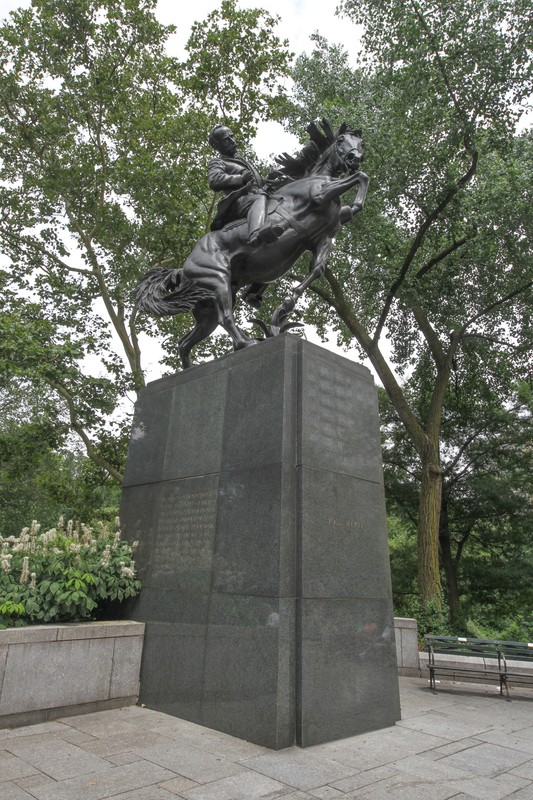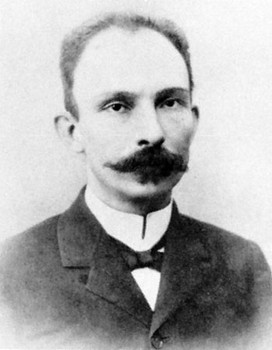José Julián Martí Statue
Introduction
Text-to-speech Audio
Images
José Julián Martí Statue

José Julián Martí (1853-1895)

Backstory and Context
Text-to-speech Audio
José Martí (full name: José Julián Martí y Pérez) was born poor to Spanish immigrants in Havana, Cuba on January 28, 1853. Despite the unenviable circumstances of his birth, he received some formal education during his early years. Possessed of incredible intellect, Martí published several poems by the age of 15. In 1868, Cuba experienced a revolutionary uprising to overthrown Spanish rule. Martí sympathized with the revolutionaries and supported the movement for Cuban independence. The following year, he established a newspaper, La Patria Libre (“The Free Fatherland”). His support for the Cuban revolutionaries along with his political newspaper drew the ire of Spanish authorities, who arrested him. Martí was sentenced to six months hard labor and later, in 1871, was deported to Spain.
While residing in his ancestral homeland, he continued his education, earning a master’s degree and a law degree from the University of Zaragoza in 1874. After earning his degrees, Martí lived in France, Mexico, and Guatemala before returning to his native Cuba in 1878. His stay, however, proved short; Spanish authorities once again exiled him to Spain the following year. Martí then left Spain to live for a short time in France and New York City, before settling in Venezuela. There, he founded the Revista Venezolana (“Venezuelan Review”), whose articles angered the country’s dictator, Antonio Guzmán Blanco. Fearing for his safety, Martí returned to New York City. While living in the United States, he continued to write poetry, newspaper articles, and essays.
Despite being deported from Cuba twice and serving six months hard labor for his beliefs, Martí’s revolutionary spirit and desire to see his native island achieve its independence never wavered. While residing in New York City, he founded the Cuban Revolutionary Party in 1892 and began plotting an invasion of Cuba, which he and others hoped would finally bring about the end of Spanish rule on the island. Martí left New York City in late January 1895 and, after spending some time in Florida, landed in Cuba in April. The following month, on May 19, he was killed during a skirmish with Spanish forces at Dos Ríos.
In the 1950s, sculptor Anna Hyatt Huntington created a bronze, over-life-sized equestrian statue of Martí. The last major work of her career, she gifted the statue to the Cuban government, which donated it, along with a dark granite pedestal, to the people of New York City. In 1959, the statue was cast at the Domico Scoma bronze Works in Queens, but—in a twist of irony—a revolution in Cuba and subsequent strained diplomatic relations between Cuba and the United States delayed its dedication. In 1965, the statue—which depicts the moment Martí was fatally wounded in battle in 1895—was finally unveiled. Nearly thirty years later, in 1992, the Central Park Conservancy completed a full restoration effort on the statue. The organization financed the project through donations from Cuban-American across the United States. Today, it is one of three equestrian statues in Central Park (along with that of Simón Bolívar and José de San Martín) that honor important figures in Latin American history.
Sources
"José Julián Martí." Central Park Conservancy. Web. 13 November 2020 <https://www.centralparknyc.org/locations/jose-julian-marti>.
"Jose Julian Marti." New York City Department of Parks and Recreation. The City of New York. Web. 13 November 2020 <https://www.nycgovparks.org/parks/central-park/monuments/982>.
"José Martí." Encyclopaedia Britannica. Web. 13 November 2020 <https://www.britannica.com/biography/Jose-Marti>.
https://www.centralparkinbronze.com/jose-julian-marti
https://www.britannica.com/biography/Jose-Marti
